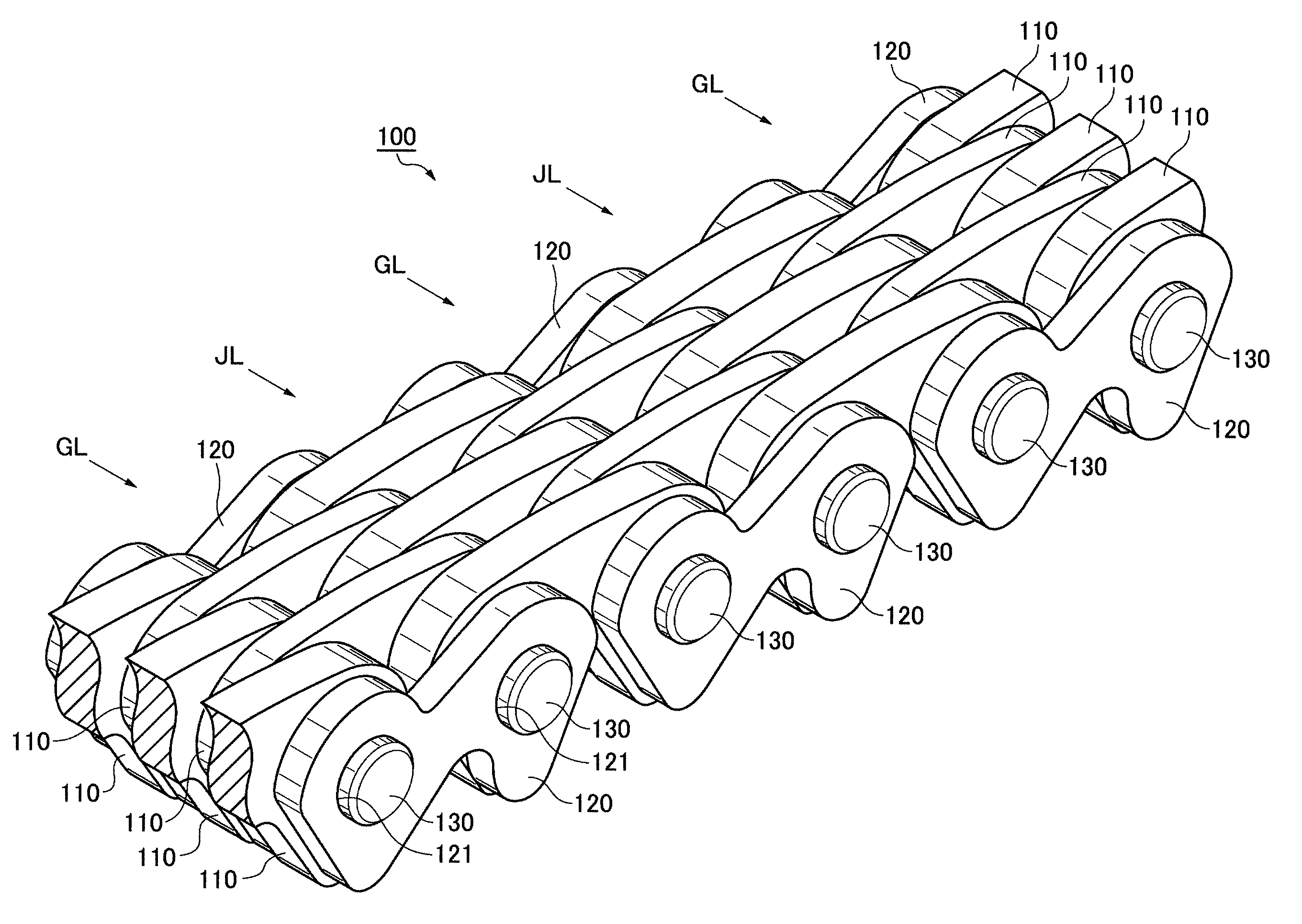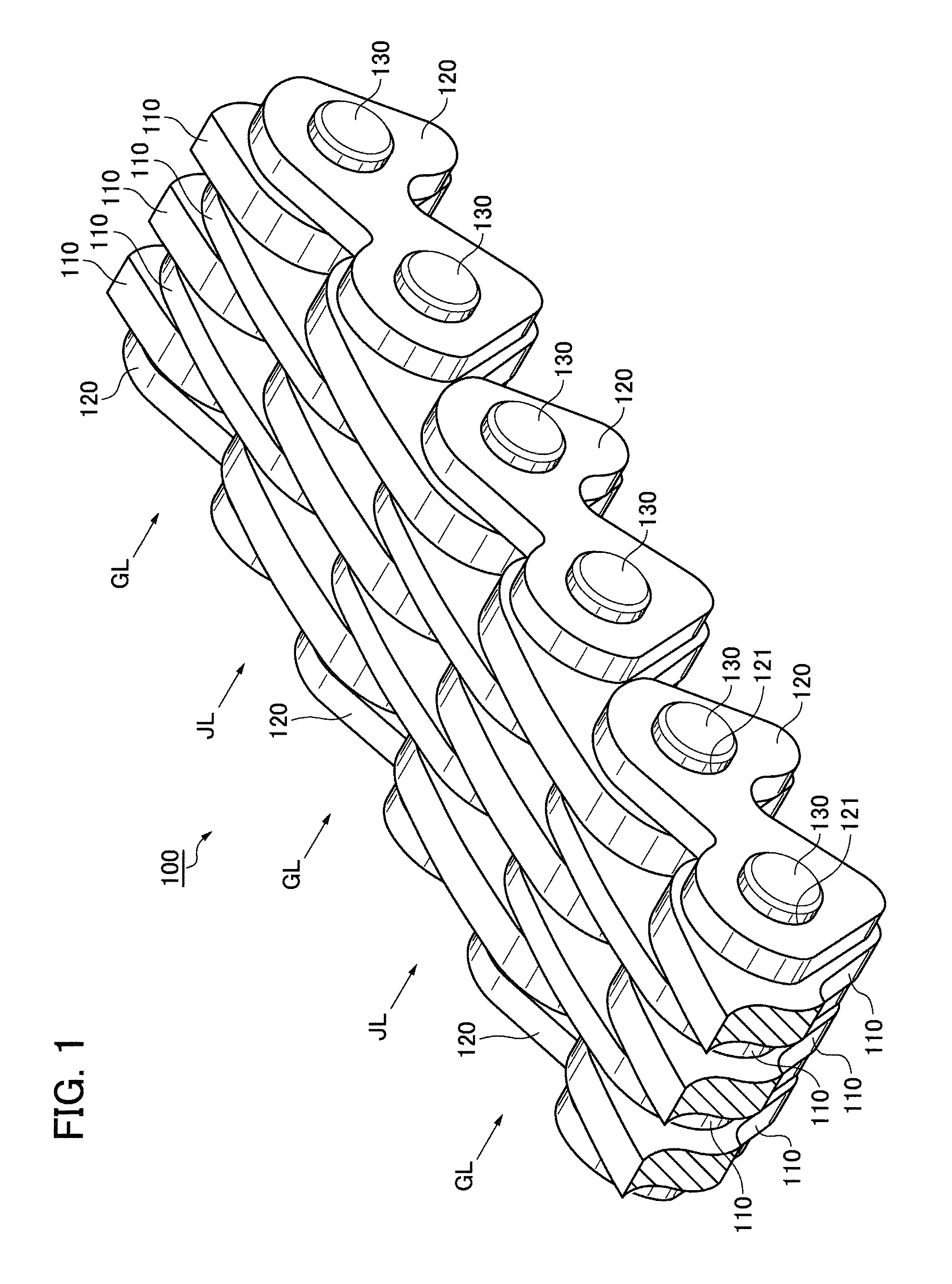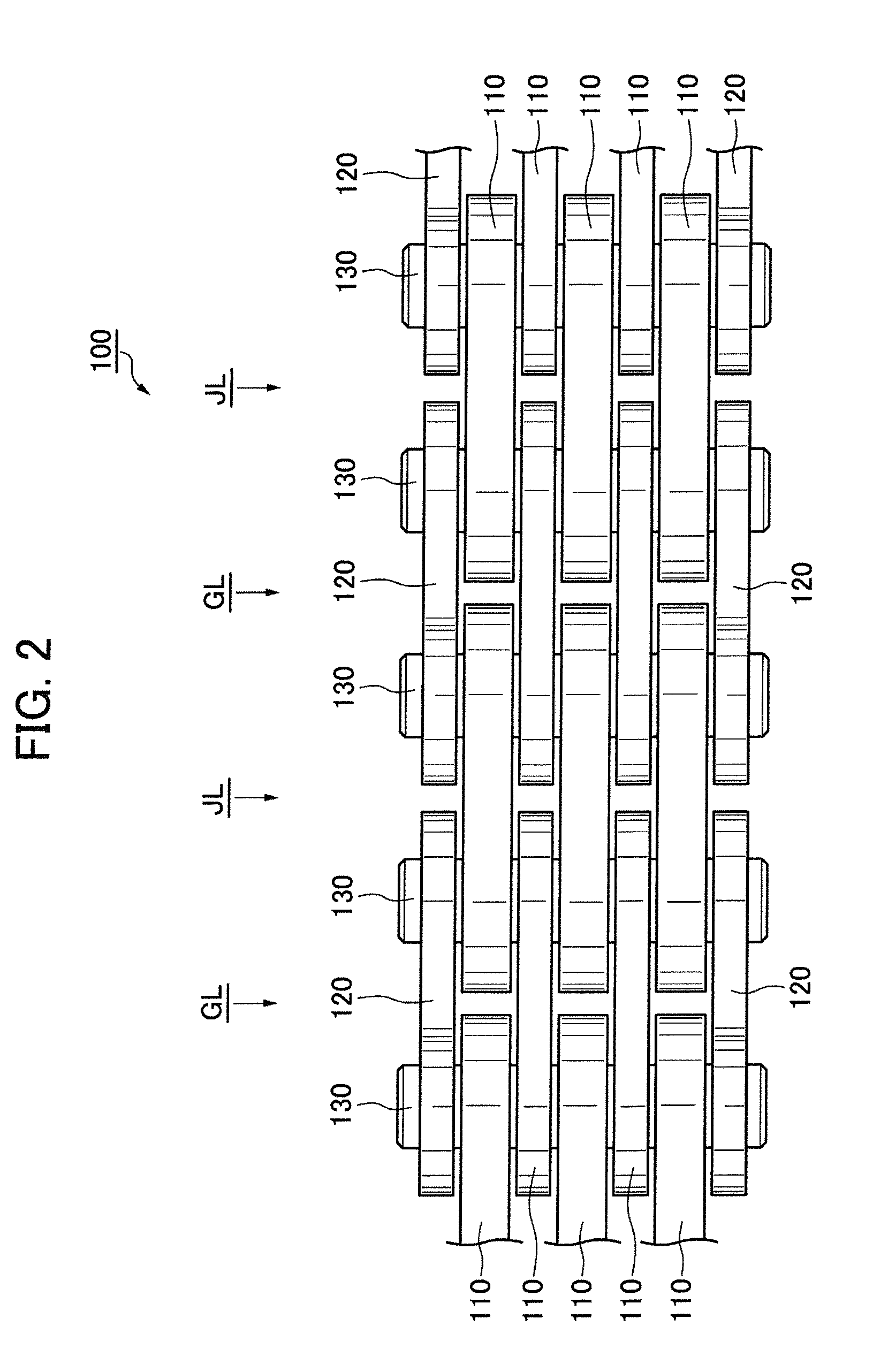Silent chain
a technology of silent chain and guide plate, applied in the direction of driving chain, belt/chain/gearring, chain elements, etc., can solve the problems of generating an unpleasant explosive sound when released, reducing the fatigue strength of the chain as a whole, and reducing the weight of the guide plate. , to achieve the effect of suppressing bending or bowing of the connecting pin, reducing the weight of the guide plate, and avoiding galling on the surfa
- Summary
- Abstract
- Description
- Claims
- Application Information
AI Technical Summary
Benefits of technology
Problems solved by technology
Method used
Image
Examples
first embodiment
[0038]As shown in FIGS. 1 and 2, a silent chain 100 according to the invention includes link plates 110 arranged in guide rows GL and non-guide rows JL. The guide rows and non-guide rows are arranged in alternating relationship along the longitudinal direction of the chain so that the chain is in the form of an endless loop. A pair of guide plates 120, each having a pair of pin holes 121 is provided on each guide row GL, one guide plate being at each end of the guide row so that link plates of the guide row are disposed between the two guide plates. Each of the link plates 110 has two pin holes through which connecting pins 130 fit loosely to connect the plates of the guide rows and non-guide rows in interleaved relationship. The connecting pins are press-fit into the pin holes 121 of the guide plates 120.
[0039]In a transmission, for example an engine timing drive, the silent chain 100 is engaged with driving and driven sprockets (not shown) so that a side of the link plates 110 tha...
second embodiment
[0053]In a second embodiment, shown in FIGS. 8 and 9, a guide plate 220 has a cut-away portion 222 on its inner side and a cut-away portion 223 on its outer side. The shape of each of these cut-away portions consists entirely of a plurality of curved lines. The curved shapes of the cut-away portions of the guide plate in FIGS. 8 and 9 provides improved suppression of the generation of cracks at the cut-away portions.
third embodiment
[0054]In a third embodiment, shown in FIGS. 10 and 11, the cut-away portion 323 of the back surface on the outer side of guide plate 320 includes a flat surface. In this embodiment, the strength of the part of the plate 320 between the cut-away portion 323 and the hole 321 farthest from the flat surface is increased. This configuration suppresses the generation of cracks in the vicinity of a deepest point 323a of the cut-away portion 323 on the outer side of the plate.
[0055]Various modifications can be made to the embodiments described above.
[0056]For example, whereas the connecting pins 130 shown in FIG. 1 are round pins, the connecting pins of the chain in accordance with the invention can be rocker joint pins each consisting of a rocker pin and a joint pin. When a round pin is used, it tends to contact the inner surface of the pin hole of the link plate in a parallel fashion over a larger area without applying a biased load, so that wear is reduced and wear elongation of the chai...
PUM
 Login to View More
Login to View More Abstract
Description
Claims
Application Information
 Login to View More
Login to View More - R&D
- Intellectual Property
- Life Sciences
- Materials
- Tech Scout
- Unparalleled Data Quality
- Higher Quality Content
- 60% Fewer Hallucinations
Browse by: Latest US Patents, China's latest patents, Technical Efficacy Thesaurus, Application Domain, Technology Topic, Popular Technical Reports.
© 2025 PatSnap. All rights reserved.Legal|Privacy policy|Modern Slavery Act Transparency Statement|Sitemap|About US| Contact US: help@patsnap.com



